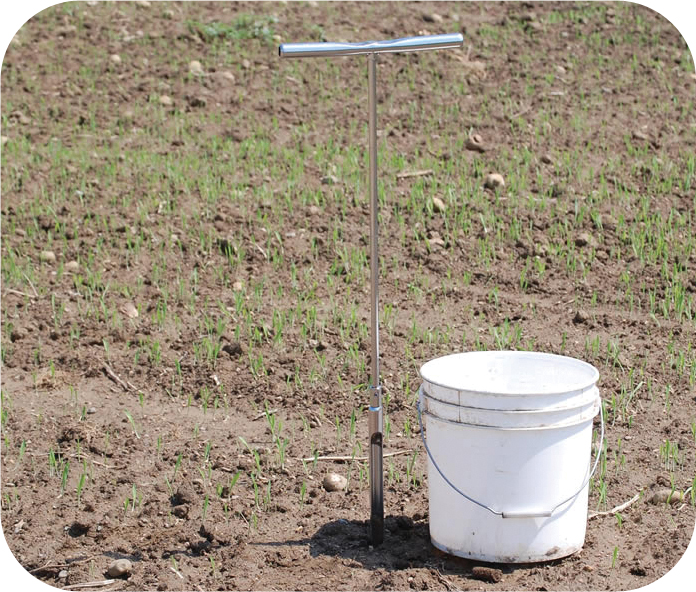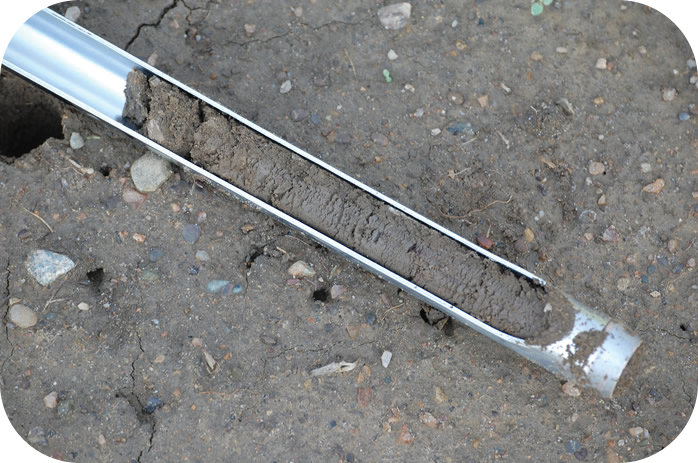Fertilizing New Apple Orchards
New apple trees should be encouraged to grow strongly in their early years so they quickly reach the desired height, usually 10 feet, or 3.5 m. This achieves two goals: to establish the dominance of the leader (which controls growth throughout the tree), and to encourage the growth of fruitful lateral branches or short scaffolds that will produce high early yields. There are three timings to provide the needed fertility to new apple trees: the preplant year, at planting time, and foliar feeding if necessary.
Preplant Year:
This is the best time to thoroughly incorporate organic matter, phosphorus, potassium, and lime. These materials are required to optimize orchard productivity but do not move readily through the soil profile.
- Soil pH: Test the soil one year in advance of planting apple trees, or two years before planting if pH adjustment may be necessary The pH of a soil is a measure of its acidity and affects nutrient uptake and crop performance. If the soil test report recommends a lime application to increase soil pH, add lime at recommended rates prior to planting. For details regarding rates and suggested types of lime to use, refer to See Soil pH and Liming, Pub. 360, tables 3-6 and 3-7.
- Manure: Manure is best applied and incorporated in the year before planting, and will provide organic matter and a nutrient source. Remember to reduce applications of N, P, and K (see Table 3-11, Publication 360 Average Fertilizer Replacement Values for Different Types of Manure). Do not put manure directly into the planting hole or trench.
- P, K, Mag and Ca: Adequate soil test nutrient levels are 12-20 ppm phosphorus, 120-150 ppm potassium, 100-250 ppm magnesium and 1,000-5,000 ppm calcium. See Table 4-2. Phosphorus and Potassium Soil Requirements Before Planting Apples, for fertilizer rates prior to planting. For long term corrections of magnesium deficiencies, soil applications of magnesium are required; however, crop response is not usually immediate. On some soil types, a single spring application of soil-applied magnesium in not enough; a second or third application the next spring may be needed. Use dolomitic limestone to supply magnesium and raise the soil pH on acidic soils. If lime is not required, apply sulphate of potash magnesia (eg. Sul-po-mag, which contains 21% potash and 11% magnesium) at the rate required for your potash needs. This is best applied as a band under the tree drip line. Most soils contain high levels of calcium, but trees sometimes have difficulty accessing it, so foliar calcium sprays may be needed once the tree is cropping.
| Soil test (ppm P) |
Phosphates (P2O5) required kg/ha |
|---|---|
0-3 |
80 HR |
4-5 |
60 HR |
6-7 |
50 HR |
8-9 |
40 MR |
10-12 |
20 MR |
13-15 |
0 LR |
16-20 |
0 LR |
21-25 |
0 RR |
26-30 |
0 RR |
31-40 |
0 RR |
41-50 |
0 RR |
51-60 |
0 RR |
61-80 |
0 NR |
80 + |
0 NR |
| Soil test (ppm K) |
Potash (K2O) required kg/ha |
|---|---|
0-15 |
180 HR |
16-30 |
170 HR |
31-45 |
160 HR |
46-60 |
140 HR |
61-80 |
110 HR |
81-100 |
70 MR |
101-120 |
40 MR |
121-150 |
20 MR |
151-180 |
0 LR |
181-210 |
0 LR |
211-250 |
0 RR |
250 + |
0 NR |
* For established apple trees, use leaf analysis to estimate requirements of Nitrogen, Phosphorus and Potassium.
HR, MR, LR, RR, and NR denote, respectively: high, medium, low, rare and no probabilities of profitable crop response to applied nutrient.
Planting Time:
Remember that your goal is to encourage as much growth as possible of both roots, and leader to quickly establish the tree and bearing area.
- Starter Fertilizer: Newly planted trees need to be well soaked in immediately after planting to ensure good contact between roots and soil. Use water only at planting to avoid root burning. For each subsequent watering, it may help to also use a water soluble plant starter at a low rate, such as 10-52-10 or 20-20-20 at 1 kg per 1000L.
- Nitrogen (N): Before new trees bear their first crop,
an annual early spring application of nitrogen is usually required.
Ammonium nitrogen (containing 34% actual N) is often used. By
Year 3, you should be using leaf analysis to determine the rate
of N to apply, and new growth should be at least 8-12" each
year. Here are suggested rates for orchards with sod established
between rows:
Year 1 - 30 g actual N per tree
Year 2 - 60 g actual N per tree
Year 3 - 90 g actual N per tree
Year 4 - 120 g actual N per tree
Year 5 - 150 g actual N per tree
Do not exceed 200 kg of actual N per ha per season regardless of number of trees per ha. Reduce by half if the orchard sod is not yet planted.
High nitrogen levels can result in excessive growth and incomplete tree hardening. Cover crops are strongly recommended to check late season growth in cultivated orchards, especially in new plantings. Cover crops such as Italian ryegrass, sown about July 1, take up much of the available nitrogen in the soil and will check the tree growth.
Establishment of sod between the rows will also avoid excessive growth and encourage tree hardening. Early spring or late summer are the best time to plant grasses, and a mixture of grass species like creeping red fescue, perennial ryegrass and tall fescues is recommended. - Potassium (K): An annual early spring application of
potash is usually required as well. Muriate of potash (containing
60% K20) is often used. Generally 80 g of muriate of
potash per 2.5 cm trunk diameter is recommended. Avoid excessive
applications of potassium as it may contribute to deficiencies
of calcium and magnesium. By Year 3, you should be using leaf
analysis to determine the rate of K to apply. Here are suggested
rates to begin:
2.5 cm trunk diameter - 80 g muriate of potash per tree
5.0 cm trunk diameter - 160 g muriate of potash per tree
7.5 cm trunk diameter - 240 g muriate of potash per tree
10.0 cm trunk diameter - 320 g muriate of potash per tree
Do not exceed 800 kg of 0-0-60 per ha per season regardless of number of trees per ha - Placement: On young trees, broadcast the fertilizer under the spread of the branches at least 15 cm from the trunk, since injury can result if placed too close. Do not put manure around newly planted trees because of potential winter injury.
Foliar Feeding :
Foliar applications of urea (46% nitrogen) have been used successfully on apples when weather or crop conditions resulted in the need for additional nitrogen at critical times.
On apples, use no more than 2.7 kg N/1000 L (6 kg urea) and apply at least 2000 L/ha, starting 7-10 days after petal fall. Make no more than 3 applications, about 10 days apart. Do not apply later than the end of July so winter survival of the tree is not adversely affected.
Micronutrients:
Deficiencies of micronutrients or trace elements are not widespread in Ontario apple plantings. Boron deficiency is perhaps the most common. Deficiencies of zinc, manganese and iron appear occasionally, particularly in alkaline or high pH soils.
The desirable range for micronutrients is very small. More damage is possible with excess amounts than with deficiencies. Do not apply micronutrients to apples except when deficiency is confirmed by leaf analysis or visible symptoms. Apply only the nutrient that is deficient in sufficient quantities to correct the problem. For more information on micronutrients in apples, see Micronutrients in Publication 360.







